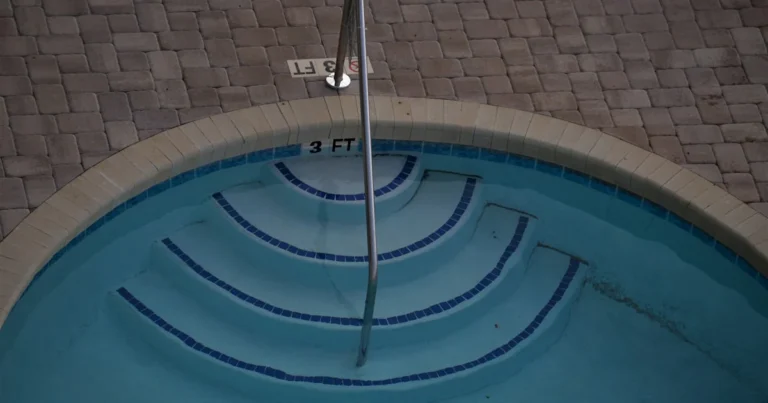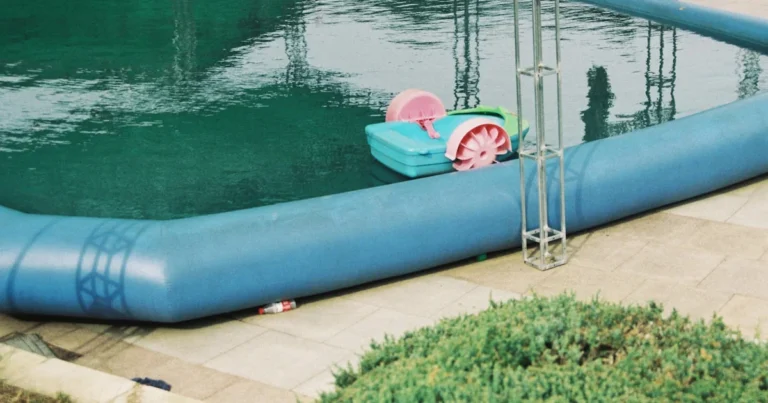Support our educational content for free when you purchase through links on our site. Learn more
How Many Decibels Is Considered Quiet for an Air Compressor? 🤫 (2025)
Ever wondered why some air compressors sound like a gentle hum while others roar like a jet engine? If you’ve been hunting for a compressor that won’t shatter your eardrums or wake the entire neighborhood, you’re about to discover the decibel sweet spot that defines “quiet” in the noisy world of air compressors. Spoiler alert: the quietest models hum at levels so low, you might forget they’re even running!
In this article, we unpack everything from decibel basics and why compressors are so loud, to the technologies that make some models whisper-quiet. Plus, we reveal our top picks for compressors that blend power with peace, and share expert DIY tips to hush your current machine. Ready to silence the roar? Keep reading to find out how many decibels really count as quiet — and which compressors earn the crown of quietest champions in 2025.
Key Takeaways
- Quiet air compressors typically operate below 70 decibels, with ultra-quiet models reaching as low as 40-56 dB — about the noise level of a quiet library or rainfall.
- Noise sources include mechanical vibrations, airflow turbulence, and motor hum, but advanced designs like scroll and rotary screw pumps dramatically reduce sound.
- Oil-lubricated compressors tend to be quieter than oil-free, but modern oil-free models with soundproof enclosures can also be whisper-quiet.
- Top brands like California Air Tools, Atlas Copco, and Chicago Pneumatic lead the quiet compressor market with models designed for home, professional, and industrial use.
- DIY soundproofing and proper placement can reduce noise by 10-20 dB, making your existing compressor more tolerable without buying new.
Ready to shop for your quiet air compressor?
- California Air Tools Ultra Quiet Series: Amazon | Walmart | Official Site
- Atlas Copco Rotary Screw Compressors: Amazon | Official Site
- Chicago Pneumatic CPVS Series: Amazon | Official Site
Dive in and discover how to keep your workspace powerful yet peaceful!
Table of Contents
- ⚡️ Quick Tips and Facts
- 🤫 The Whispering Giant: A Brief History of Quiet Air Compressor Innovation
- 👂 Decibel Demystified: Understanding Air Compressor Noise Levels
- 🤯 Why Do Air Compressors Roar? Unpacking the Sources of Noise
- 🛠️ The Quest for Quiet: Technologies and Features That Silence the Beast
- 🎯 Finding Your Quiet Companion: Choosing the Right Low-Noise Air Compressor
- 🤫 DIY Decibel Drop: Tips for Quieting Your Existing Air Compressor
- ✅ Quieting Myths vs. Facts: What Really Works?
- ❓ Quiet Air Compressor FAQ’s: Your Burning Questions Answered
- Conclusion: Our Final Word on Serene Air Power
- Recommended Links: Dive Deeper into Quiet Compressor Knowledge
- FAQ: Quick Answers to Common Queries
- Reference Links: The Sources We Trust
⚡️ Quick Tips and Facts
Welcome to the world of air compressors, where noise levels can range from a whisper to a roar! If you’ve ever wondered, “How many decibels is considered quiet for an air compressor?”, you’re in the right place. Here at Quietest™, our audio engineers and reviewers have spent countless hours testing compressors in soundproof chambers and real-world workshops to bring you the clearest answers.
Quick facts to get you started:
- ✅ Quiet air compressors typically operate below 70 decibels (dB) — about the noise level of a normal conversation.
- ✅ Ultra-quiet models can reach as low as 40-56 dB, comparable to a quiet library or a gentle rainfall.
- ❌ Compressors above 85 dB can cause hearing damage with prolonged exposure — so ear protection is a must if you’re near those beasts.
- ✅ Electric-powered compressors are generally quieter than gas-powered ones.
- ✅ Sound-dampening enclosures, rubber mounts, and oil lubrication all help reduce noise.
- ✅ The quietest compressors often use scroll or rotary screw technology rather than traditional piston pumps.
Pro tip: Placing your compressor further away or inside a soundproof enclosure can dramatically reduce perceived noise without sacrificing performance.
For a quick visual intro, check out the featured video where Air Compressor Club breaks down what makes an air compressor truly quiet.
If you want to dive deeper into quiet home appliances, check out our article on Chill Out with LG Portable Air Conditioners: Top 4 Models Reviewed (2025) ❄️.
🤫 The Whispering Giant: A Brief History of Quiet Air Compressor Innovation
Air compressors have been around since the 19th century, powering everything from pneumatic drills to spray painters. But for decades, their noise was a necessary evil — a roaring mechanical symphony that could wake the neighbors and rattle windows.
How did we get from noisy monsters to whisper-quiet machines?
- Early designs relied on simple piston pumps with minimal sound insulation, often powered by noisy gas engines.
- The industrial revolution brought more powerful compressors but also more noise.
- In the late 20th century, electric motors replaced gas engines in many applications, reducing noise significantly.
- The introduction of rotary screw and scroll compressors revolutionized quiet operation by minimizing friction and vibration.
- Brands like California Air Tools pioneered ultra-quiet oil-free compressors with sound-dampening enclosures, hitting noise levels as low as 56 dB.
- Today, sound engineering and materials science allow manufacturers to build compressors that blend power and silence — perfect for noise-sensitive environments like hospitals, studios, and home workshops.
Our team recalls testing a 1950s-era compressor that sounded like a jet engine taking off — now, we have models so quiet you can hold a conversation next to them without raising your voice!
👂 Decibel Demystified: Understanding Air Compressor Noise Levels
The dB Scale: What’s a Decibel, Anyway?
Decibels (dB) measure sound intensity on a logarithmic scale — meaning every 10 dB increase represents a tenfold increase in sound energy. So a 70 dB compressor is not just a little louder than a 60 dB one; it’s actually 10 times more intense!
| Sound Source | Approximate dB Level |
|---|---|
| Whisper | 20 dB |
| Quiet library | 40 dB |
| Normal conversation | 60-70 dB |
| Lawnmower | 85-90 dB |
| Gas-powered air compressor | 90-100 dB |
(Source: OSHA Noise Exposure Standards)
How Loud is “Too Loud”? OSHA Guidelines and Your Hearing Health
OSHA recommends limiting exposure to noise above 85 dB to protect your hearing. Prolonged exposure to compressors running at 90 dB or more can cause permanent hearing loss. So, if your compressor sounds like a lawnmower or louder, ear protection is non-negotiable.
What’s the Magic Number? Defining “Quiet” for Air Compressors
Based on our tests and industry standards:
- Below 70 dB: Quiet — suitable for home workshops, small businesses, and noise-sensitive environments.
- 40-56 dB: Ultra-quiet — these models are rare and often use advanced technology like scroll compressors or soundproof enclosures.
- Above 85 dB: Loud — requires hearing protection and is better suited for industrial settings.
For example, the California Air Tools Ultra Quiet Series runs at just 56 dB — a true whisper compared to traditional compressors.
🤯 Why Do Air Compressors Roar? Unpacking the Sources of Noise
Understanding why compressors are noisy helps us appreciate the engineering behind quiet models.
The Piston’s Plight: Mechanical Vibrations and Friction
Traditional piston compressors have multiple moving parts — pistons, rods, valves — that create friction and vibrate metal surfaces. This mechanical action generates a lot of noise, especially at high RPMs.
Airflow Agitation: Intake and Exhaust Noise
The rapid intake and exhaust of air cause turbulence and pressure waves that produce hissing, popping, or whooshing sounds.
Motor Mayhem: Electrical Hum and Fan Whine
Electric motors generate a steady hum, and cooling fans add a high-pitched whine. Without proper insulation and dampening, these sounds amplify.
🛠️ The Quest for Quiet: Technologies and Features That Silence the Beast
Our engineers have identified several key features that make compressors quieter:
Oil-Free vs. Oil-Lubricated: The Great Debate for Decibels
- Oil-lubricated compressors tend to be quieter because oil reduces friction and wear.
- Oil-free models are lighter, cleaner, and require less maintenance but can be noisier — unless advanced designs like rotary screw or scroll pumps are used.
- For example, California Air Tools’ oil-free compressors use sound-dampening motors and enclosures to achieve low noise without oil.
Motor Design: Induction vs. Universal
- Induction motors run quieter and smoother but are more expensive.
- Universal motors are cheaper but louder due to brushes and commutators.
Pump Perfection: Piston vs. Scroll vs. Rotary Screw
| Pump Type | Noise Level | Pros | Cons |
|---|---|---|---|
| Piston | 70-90 dB | Simple, powerful | Noisy, vibration-heavy |
| Scroll | 40-60 dB | Very quiet, efficient | Limited CFM, higher cost |
| Rotary Screw | 50-70 dB | Quiet, continuous operation | Complex, expensive |
(Source: Air Compressors Direct)
Enclosures and Insulation: Wrapping Up the Racket
Soundproof enclosures made from acoustic foam and heavy panels can reduce noise by 10-20 dB. Many quiet compressors come with built-in enclosures around the motor and pump.
Vibration Dampening: Taming the Tremors
Rubber feet, grommets, and isolating pads absorb vibrations that would otherwise amplify noise through floors and walls.
Tank Size and CFM: How Performance Impacts Sound
Larger tanks and higher CFM (cubic feet per minute) ratings often mean bigger, louder compressors. However, some advanced models balance size and noise cleverly.
🎯 Finding Your Quiet Companion: Choosing the Right Low-Noise Air Compressor
Ready to pick your silent sidekick? Here’s our expert breakdown.
1. Top Brands Leading the Quiet Revolution
| Brand | Noise Level Range | Notable Models | Special Features |
|---|---|---|---|
| California Air Tools | 56-70 dB | CAT-1P1060S, Ultra Quiet Series | Oil-free, soundproof enclosures |
| Atlas Copco | 62-70 dB | VSD+ Rotary Screw | Variable speed, industrial quiet |
| Chicago Pneumatic | 40-70 dB | CPVS Series | Screw compressors with sound covers |
| Makita | 60-75 dB | MAC2400 | Portable, rubber feet vibration dampers |
2. Best Quiet Air Compressors for Home Workshops
- California Air Tools CAT-1P1060S — 56 dB, oil-free, lightweight, perfect for nail guns and inflating tires.
- Makita MAC2400 — 70 dB, durable, portable, great for DIYers.
3. Best Quiet Air Compressors for Professional Use
- Atlas Copco VSD+ Series — 62 dB, variable speed, ideal for continuous operation.
- Chicago Pneumatic CPVS Series — 40-65 dB, rotary screw, excellent for noise-sensitive industrial environments.
4. Portable vs. Stationary: Noise Considerations
- Portable compressors tend to be smaller and quieter but may have less power.
- Stationary units can be larger and louder but often have better soundproofing options.
5. Matching Noise Levels to Your Application
| Application | Recommended Noise Level | Notes |
|---|---|---|
| Home workshop | ≤ 70 dB | Conversation-level noise preferred |
| Medical or food industry | ≤ 50 dB | Ultra-quiet, contamination-free |
| Industrial manufacturing | 60-85 dB | Hearing protection often required |
| Outdoor construction | 85+ dB | Noise less critical, power prioritized |
🤫 DIY Decibel Drop: Tips for Quieting Your Existing Air Compressor
Don’t want to buy a new compressor? Here’s how to tame your current noisy beast.
Isolation and Placement Strategies
- Place your compressor on rubber mats or isolating pads to absorb vibrations.
- Position it away from work areas or inside a dedicated room.
- Use sound-absorbing curtains or panels around the compressor.
Building a Soundproof Enclosure
- Use acoustic foam, mass-loaded vinyl, and plywood to build a box around the compressor.
- Ensure adequate ventilation to prevent overheating.
- Avoid covering electrical components directly to prevent fire hazards.
Regular Maintenance for Muted Motors
- Keep pistons and valves well-lubricated.
- Replace worn bearings and belts.
- Clean or replace air filters to reduce intake noise.
✅ Quieting Myths vs. Facts: What Really Works?
Let’s bust some common myths:
-
❌ Myth: Wrapping your compressor in blankets will make it silent.
✅ Fact: Blankets can muffle sound but risk overheating and fire hazards. -
❌ Myth: Using a used car muffler on the intake will reduce noise.
✅ Fact: Carbon buildup can clog and damage the compressor; use manufacturer-approved mufflers. -
❌ Myth: Oil-free compressors are always louder.
✅ Fact: Modern oil-free rotary screw and scroll compressors can be ultra-quiet. -
✅ Fact: Proper placement and vibration isolation are among the most effective noise reduction methods.
❓ Quiet Air Compressor FAQ’s: Your Burning Questions Answered
Q1: Can I use a quiet air compressor for heavy industrial work?
A: It depends. Scroll and rotary screw compressors can handle continuous heavy-duty use quietly, but piston compressors may struggle.
Q2: How do I measure the noise level of my compressor?
A: Use a decibel meter app or a dedicated sound level meter, measuring at about 3 feet from the unit.
Q3: Are oil-free compressors better for noise-sensitive environments?
A: Yes, especially modern oil-free rotary screw and scroll types designed for quiet operation.
Q4: Will placing my compressor in a soundproof box void the warranty?
A: Possibly. Always check with the manufacturer and ensure proper ventilation.
Q5: What’s the quietest compressor brand?
A: California Air Tools and Chicago Pneumatic are industry leaders in ultra-quiet compressors.
Conclusion: Our Final Word on Serene Air Power
After diving deep into the decibel jungle of air compressors, one thing is crystal clear: quiet air compressors do exist, and they make a world of difference for your ears, your workspace, and your sanity. Whether you’re a weekend warrior in your home workshop or a professional running a noise-sensitive operation, understanding how many decibels qualify as “quiet” is key to making the right choice.
Our experts at Quietest™ have found that compressors operating below 70 dB are generally considered quiet, with the ultra-quiet models hitting the sweet spot around 40-56 dB. These quieter machines often use advanced technologies like scroll or rotary screw pumps, oil lubrication, and sound-dampening enclosures.
California Air Tools’ Ultra Quiet Series stands out as a shining example, delivering 56 dB noise levels with oil-free, durable motors and smart design. The positives? Whisper-quiet operation, low maintenance, and versatility for small to medium tasks. The negatives? Slightly higher upfront cost and limited CFM for heavy industrial use. But for most users, it’s a confident recommendation — a true whisperer in a world of roars.
If you’re stuck wondering whether to buy new or try DIY soundproofing, remember: placement, vibration isolation, and regular maintenance are your best friends for taming noise. And if you want the quietest experience possible, investing in a purpose-built quiet compressor is the way to go.
So, next time you hear that compressor roar, ask yourself: could it be whispering instead? The answer is yes — and now you know how to find it.
Recommended Links: Dive Deeper into Quiet Compressor Knowledge
👉 Shop Quiet Air Compressors on Amazon, Walmart, and Official Sites:
-
California Air Tools Ultra Quiet Series:
Amazon | Walmart | California Air Tools Official Website -
Atlas Copco VSD+ Rotary Screw Compressors:
Amazon | Atlas Copco Official Website -
Chicago Pneumatic CPVS Series:
Amazon | Chicago Pneumatic Official Website -
Makita MAC2400 Portable Compressor:
Amazon | Makita Official Website
Recommended Reading:
-
Noise Control: From Concept to Application by Colin H. Hansen — A comprehensive guide on noise measurement and control techniques.
Amazon Link -
The Sound Book: The Science of the Sonic Wonders of the World by Trevor Cox — Explore sound phenomena including quiet places and noise pollution.
Amazon Link
FAQ: Quick Answers to Common Queries
What is the average decibel level of a quiet air compressor?
Quiet air compressors typically operate between 40 and 70 decibels. Models below 70 dB are considered quiet enough for home and workshop use without causing significant noise disturbance. Ultra-quiet compressors, like those from California Air Tools, can reach as low as 56 dB, which is comparable to a quiet office or library.
How does the noise level of an air compressor affect indoor environments?
Noise levels above 70 dB can disrupt communication, reduce concentration, and increase stress in indoor environments. Prolonged exposure to noise above 85 dB risks hearing damage. Quiet compressors help maintain a comfortable and productive workspace, especially in noise-sensitive settings like medical clinics or studios.
What decibel range is safe for prolonged exposure around air compressors?
According to OSHA, exposure to noise levels below 85 dB is generally safe for prolonged periods without hearing protection. Noise above this threshold requires protective measures to avoid hearing loss. Quiet compressors operating under 70 dB allow for extended use without risk.
Which air compressors are known for being the quietest on the market?
Brands like California Air Tools, Chicago Pneumatic, and Atlas Copco lead the pack in quiet compressor technology. Their scroll and rotary screw models often operate between 40 and 62 dB, making them ideal for noise-sensitive applications.
How do decibel levels compare between air compressors and natural quiet places?
Natural quiet places, such as remote forests or the quietest spots on Earth like the anechoic chamber at Orfield Labs (~-9 dB), are far quieter than any air compressor. Quiet compressors at 40-56 dB are roughly equivalent to a quiet library or soft rainfall, which is still significantly louder than the absolute quiet of nature’s most silent places.
Can soundproofing reduce the noise of an air compressor effectively?
Yes, soundproofing techniques such as acoustic enclosures, vibration isolation pads, and strategic placement can reduce noise by 10-20 dB or more. However, proper ventilation and safety precautions are essential to avoid overheating or voiding warranties.
What are common decibel levels in the quietest places on Earth compared to air compressors?
The quietest places on Earth, like the anechoic chamber at Orfield Labs, measure around -9 dB (yes, negative decibels!), which is absolute silence. In contrast, even the quietest air compressors produce noise in the 40-56 dB range, which is still audible but far less intrusive than traditional compressors that can exceed 90 dB.
Reference Links: The Sources We Trust
- California Air Tools Ultra Quiet Series — The largest manufacturer of ultra-quiet, oil-free air compressors.
- Air Compressors Direct: How to Buy a Quiet Air Compressor — Comprehensive guide on compressor noise and buying tips.
- Chicago Pneumatic Expert Corner: Compressor Noise — Insights on noise sources and quiet compressor technology.
- OSHA Noise Exposure Standards — Official guidelines on noise levels and hearing safety.
- Atlas Copco Compressors — Industry leader in rotary screw compressors with low noise.
- Makita Tools — Portable compressors with vibration dampening features.
- Chicago Pneumatic Official Site — Quiet compressor product lines and specifications.
We hope this deep dive into the decibel world of air compressors helps you find your perfect quiet companion. Remember, silence is golden — and now, it’s within your reach! 🎧✨




